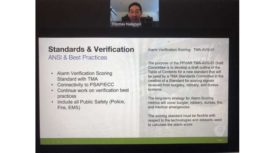Home » Keywords: » PPVAR
Items Tagged with 'PPVAR'
ARTICLES
ALARM VERIFICATION
How Monitoring Companies Can Blaze the Trail to Video-Verified Response
The ultimate goal of PPVAR is to reduce false alarms and increase apprehension rates for intrusion alarm customers. Here’s how monitoring companies can blaze that trail.
January 2, 2019
Get our new eMagazine delivered to your inbox every month.
Stay in the know on the latest security marketplace trends.
SUBSCRIBE TODAY!Copyright ©2024. All Rights Reserved BNP Media.
Design, CMS, Hosting & Web Development :: ePublishing










